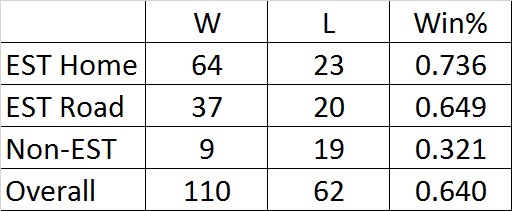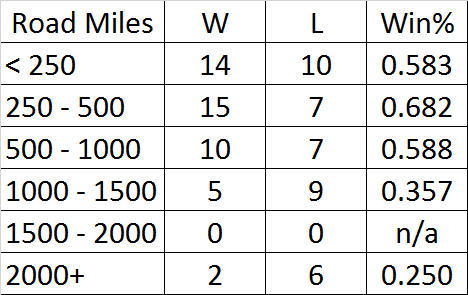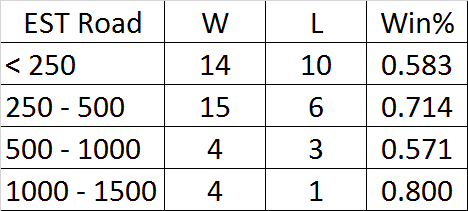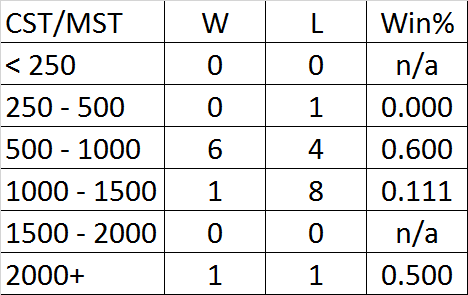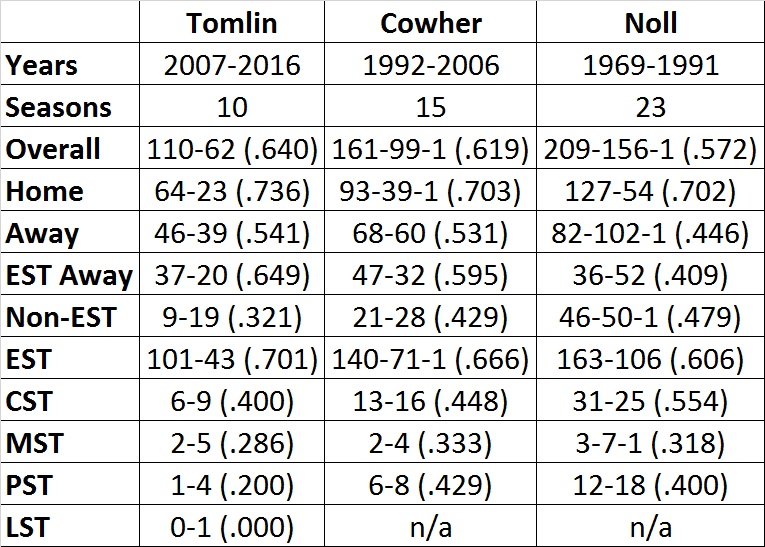The Steelers 2016 schedule did not include a single trip outside of the Eastern Time Zone. For those who have been long-time readers of my blog, you know one of my favorite (weird) stats to harp on is the Steelers bizarre splits based on time zones. Last year, the Steelers made five trips outside the Eastern Time Zone (including the playoff game in Denver) and went 2-3, losing their last 3 to Kansas City, Seattle, and Denver. In his 10 years as head coach of the Steelers, Mike Tomlin has inexplicably bad splits between his record in Eastern Standard Time and outside of Eastern Standard Time (that were not shared by his predecessors).
Over the last decade the Steelers have been the third best team in the league with a 110-62 overall record (.640 winning percentage). Only New England (136-41, .768) and Green Bay (115-60-1, .656) have been better during that span. Hidden in that, however, is just how bad the Steelers are when they have to travel outside of their time zone. For reference, I have included all regular season and playoff games in this analysis, so this is a reflection of the Steelers true overall record, playoffs included.
Under Tomlin, the Steelers are 101-43 (.701) in all games played in the Eastern Time Zone. Obviously, being that our home games are played in Eastern Time, this number is slightly inflated by our 64-23 (.736) home record, which is also third best in the league. When the Steelers leave home within the Eastern Time Zone, they are 37-20 (including their Super Bowl XLIII win in Tampa, which was a neutral location). This .649 winning percentage is second best in the league in road/neutral EST games (behind only New England’s .685).
Given that the Steelers win about two-thirds of their road/neutral EST games, it is utterly shocking that they have posted a mere 9-19 (.321) mark when they leave the Eastern Time Zone. The Steelers have not exactly faced a gauntlet of quarterbacks in their non-EST games either. They have lost games to teams led by Alex Smith, Tim Tebow, Peyton Manning, Matt Hasselbeck, Tony Romo, Matt Cassel, and Terrelle Pryor.
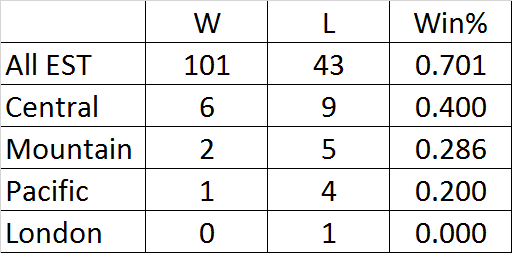
All of the Steelers games in Pacific Time and London time zones fell into the “2000+” category, and they were 1-5 in those contests. Therefore, I split out the Steelers results in both Eastern time and Central/Mountain time by distance from home to determine if distance was a contributing factor.
Based on these two charts, I feel comfortable saying that distance does not play a major role in the Steelers road splits. The biggest indicator is the team’s performance in games 1000-1500 miles away. When the Steelers have traveled over 1000 miles but stayed within the Eastern Time Zone, they are 4-1 – winning twice in Tampa (including the Super Bowl) and going 2-1 in Miami. However, when the Steelers travelled in the same distance range (1000-1500 miles) and changed time zones, their performance dropped off significantly. Their losses outside of EST in this travel range include 4 in Denver (two of those in the playoffs), 2 in Dallas (one in the Super Bowl to Green Bay), 1 in Houston and 1 in New Orleans. Their lone win came in 2009 in Denver. If you include all trips over 1000 miles where the time zone changed, the Steelers are just 2-8 (.200) given their split in Arizona (2136 miles away, Mountain Time). Additionally, the Steelers have performed relatively the same when traveling between 500 and 1000 miles. Given these numbers, I can not confidently say that distance traveled is the determining factor in the Steelers poor road splits.
This brings us back to time zones. Since the Steelers have won 40% of their games in Central and Mountain time, one would think that their performance would drop off even in Eastern Time the farther they traveled from home. As we have seen, this is simply not true as the Steelers have a winning record in every distance split in EST. Therefore, the disparity in record can be drawn purely along the time zone lines and not by actual distance.
Given that we are in the postseason, it is worth noting that Kansas City is 857 miles away and in the Central Time Zone. The Steelers have lost their last 3 playoff games outside of Eastern Time and are just 1-6 in playoff games outside the Eastern Time Zone since Bill Cowher took over as head coach in 1992. Their lone win came in the 2005 AFC Championship Game in Denver. Both of their Super Bowl losses came outside of Eastern Time with the loss to Dallas in Arizona and the loss to Green Bay in Dallas. Mike Tomlin is 2-0 in road/neutral playoff games in Eastern Time with wins at Cincinnati and over Arizona in the Super Bowl in Tampa. Tomlin is 5-2 in home playoff games bringing his overall record to 7-2 in postseason games in EST and 0-3 in playoff games outside of EST.
As an addendum, I took a look at the Steelers road splits under Bill Cowher and Chuck Noll to see if this was a trend that had been long-standing with the organization or a recent development under Mike Tomlin.
Under Cowher, there was a dropoff when the Steelers left the Eastern Time Zone, but it was not nearly as pronounced. Under Noll, the Steelers had a losing record overall on the road and were actually better outside the Eastern Time Zone. This gives some credence to this Nollism that Steelers Digest Editor Bob Labriola shot my way when I brought up Tomlin’s Time Zone issues to him a few years ago.
@thesteelersnat To quote Chuck Noll, “Losing has nothing to do with geography.”
— Bob Labriola (@BobLabriola) July 17, 2014
For Chuck Noll, this was true. Losing had nothing to do with geography because while his teams were excellent in Three Rivers Stadium, they lost a lot of games on the road. There was only a slight disparity between EST and non-EST road games for Noll’s Steelers. Overall, Tomlin’s greatest strength has been his ability to defend Heinz Field. In fact, Tomlin has the best home winning percentage of all three coaches. Tomlin’s biggest shortcomings in comparison to Cowher and Noll have been in the Central and Pacific Time Zones.
On the whole, all three coaches have been successful. Tomlin’s .640 overall winning percentage is third best in the league from 2007-2016, Cowher’s .619 winning percentage was the best in the league from 1992-2006, and Noll’s .572 winning percentage was 8th-best in the league from 1969-1991. Overall, the Steelers’ 480-317-2 record (and .602 winning percentage) is the best in the league since 1969. Of course, we can’t forget those 6 Super Bowl titles either. But if they’re going to stay on the road to winning a 7th this season, they will have to do something this team has only done once since 1992 – win a playoff game outside the Eastern Time Zone.
Add The Sports Daily to your Google News Feed!

